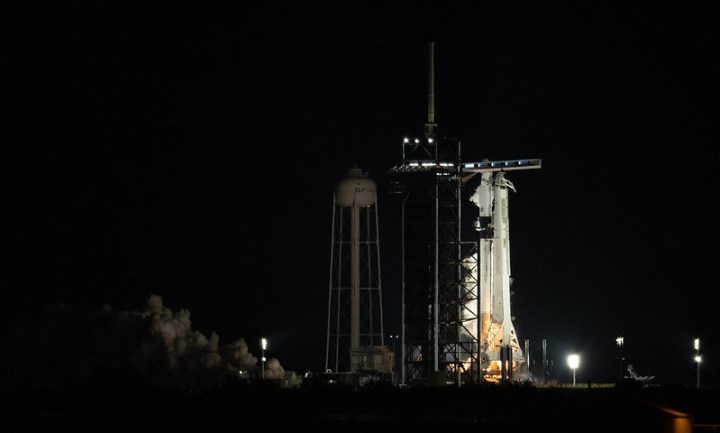
A new batch of astronauts will shortly be traveling to the International Space Station (ISS) aboard a SpaceX Crew Dragon craft. This will be the second operational flight of the Crew Dragon, which underwent its historic first crewed test flight in 2020. Ahead of the new mission, named Crew-2, SpaceX has performed a static fire test of the Falcon 9 rocket which will launch the Crew Dragon capsule.
The static fire test, in which the rocket is fueled and prepared as if for launch and then fires its engines for several seconds while remaining tethered to the ground, went ahead early in the morning of Saturday, April 17. The test was performed at Launch Complex 39A at the agency’s Kennedy Space Center in Florida and consisted of a seven-second firing of the rocket’s nine first-stage Merlin engines.
With the test results looking good, NASA and SpaceX are now preparing for the launch, scheduled for 6:11 a.m. ET on Thursday, April 22.
The first stage of the Falcon 9 to be used for this mission is the same first stage previously used in the Crew-1 mission in November last year. In addition, the Crew Dragon being used is the same one that was used in the first crewed test flight, called Demo-2. According to SpaceX, this marks the first time that astronauts will be transported using both a previously-flown Falcon 9 and Dragon capsule.
The astronauts who will be boarding the Dragon for Crew-2 are NASA astronauts Shane Kimbrough and Megan McArthur, plus JAXA (Japan Aerospace Exploration Agency) astronaut Akihiko Hoshide, and ESA (European Space Agency) astronaut Thomas Pesquet. They will join the crew of the International Space Station as part of Expedition 65.
Between the four-person crew, they have previous experience on both Space Shuttle and Soyuz missions. McArthur spoke about seeing the transition from Shuttle to Soyuz to Dragon flights in an interview on NASA TV, saying “We’re all very excited to be a part of it now. It’s neat that there is, amongst these four crew members, the experience from three different vehicles. We’re fortunate to get to draw on all of that for this upcoming mission.”



